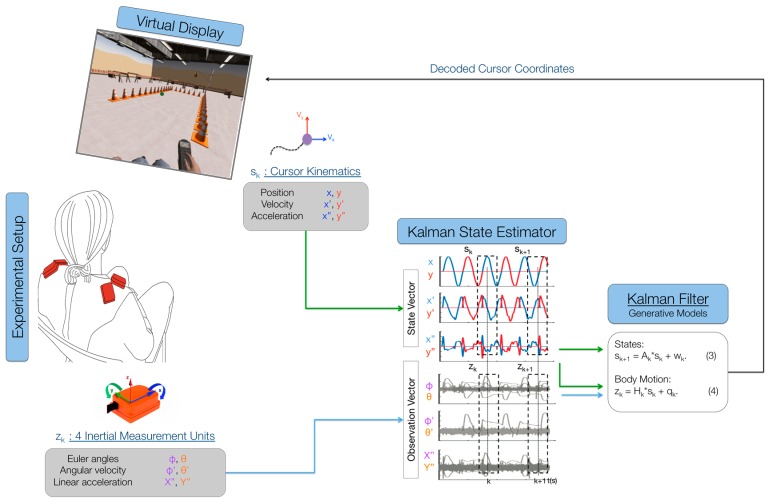Figure 1.
Kalman decoding of body motions into control signals for a virtual display. The participant sat in front of a computer monitor where the virtual cursor was displayed. Body motions were recorded using 3DOF inertial measurement units from Xsens and passed into the decoder as Euler angles, angular velocities and linear accelerations. Cursor position, velocity and acceleration were decoded from body motions using a Kalman filter. The body-machine interface then calculated the virtual display cursor’s position based on participant body movements and displayed it to the user via the computer monitor, thus closing the control loop for the user. The task of the participant was to use the virtual cursor to acquire a series of targets presented on the screen, type, play videogames and drive a virtual wheelchair.

